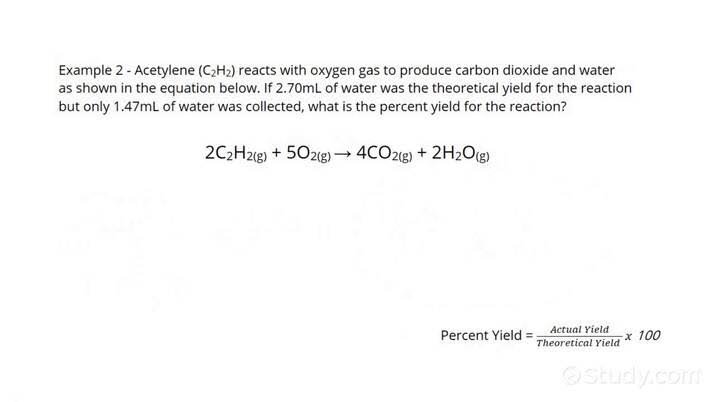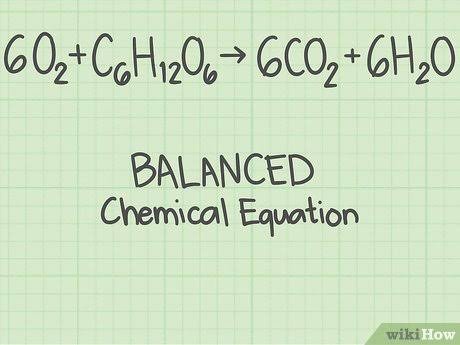Introduction to Yield Calculators
Chemistry yield calculators are indispensable tools in both academic and industrial chemistry settings. These calculators are designed to facilitate the calculation of theoretical and actual yields, which are crucial for assessing the efficiency of chemical reactions. By inputting specific parameters such as reactant quantities and product masses, these calculators offer quick, accurate yield estimations, making them an invaluable asset for chemists.
The core significance of chemistry yield calculators lies in their ability to enhance both efficiency and precision in experimental procedures. Calculating yields manually can be a time-consuming and error-prone process. In contrast, yield calculators automate these computations, thereby minimizing human error and freeing up valuable time for other critical tasks. This aspect is particularly beneficial in industrial settings where large-scale production and tight deadlines necessitate impeccable accuracy.
In the academic world, chemistry yield calculators serve as excellent educational aids. They help students grasp the theoretical underpinnings of chemical reactions by providing immediate feedback on their calculated yields. This instant verification allows for a deeper understanding of stoichiometric relationships and other fundamental concepts.
Moreover, the integration of chemistry yield calculators into experimental workflows also paves the way for better resource management. By accurately predicting yields, chemists can plan their reagent usage more efficiently, thereby reducing waste and optimizing costs. This is particularly relevant in industries where the cost of raw materials can significantly impact the overall budget.
In summary, chemistry yield calculators streamline the process of yield determination, thereby significantly improving the efficiency and accuracy of both experimental and industrial chemical practices. These calculators not only save time but also enhance the educational experience, making them an essential tool for anyone involved in the field of chemistry.
The Basics of Yield Calculation

Understanding the fundamental concepts of yield calculation is essential for any chemistry practitioner, whether you are working in an academic setting, industry laboratory, or conducting research. Yield calculations help in determining the efficiency of a chemical reaction and are fundamental for optimizing processes and ensuring resource efficiency. There are three critical terms associated with yield calculations: theoretical yield, actual yield, and percent yield.
The theoretical yield refers to the maximum amount of product that could be formed from a given amount of reactants, assuming perfect conditions where no reactants are lost or side reactions occur. This quantity is based on stoichiometric calculations derived from the balanced chemical equation. For example, if one were to react 1 mole of A with 1 mole of B to form 1 mole of product C, under ideal conditions, the theoretical yield of product C would be 1 mole.
On the other hand, the actual yield is the quantity of product that is actually obtained from a chemical reaction. This is usually less than the theoretical yield due to various practical factors such as incomplete reactions, side reactions, or practical losses during the process. For instance, if only 0.8 moles of product C are obtained from the reaction between 1 mole of A and 1 mole of B, then the actual yield is 0.8 moles.
The percent yield quantifies the efficiency of the reaction, calculated as:
Percent Yield = (Actual Yield / Theoretical Yield) x 100
Using our previous example, the percent yield would be (0.8 moles / 1 mole) x 100 = 80%. This means that the reaction was 80% efficient in producing the desired product.
Utilizing a chemistry yield calculator can simplify these calculations, ensuring accuracy and saving time. By inputting the necessary data such as reactants’ quantities and the obtained product, the calculator efficiently computes the percent yield, providing quick insight into the reaction’s efficiency and areas that may need optimization.
Step-by-Step Guide to Using a Yield Calculator

Utilizing a chemistry yield calculator is a fundamental aspect of modern laboratory practices, aiding in the accurate determination of product yields from chemical reactions. To harness the full potential of a yield calculator, follow this structured guide to ensure precise calculations and interpretations.
Firstly, gather all the necessary information about the reactants and products involved in the chemical reaction. This includes the molecular weights, initial quantities of reactants, and the balanced chemical equation for the reaction. Accurate data collection is imperative for reliable results.
Begin by entering the quantities of each reactant into the yield calculator. Most calculators will have designated fields to input the amount in grams, moles, or other relevant units. Ensure that these inputs are precise, as inaccuracies can significantly affect the outcome of your calculations.
Next, identify the limiting reagent. The limiting reagent is the reactant that is entirely consumed first during the reaction, thereby determining the maximum amount of product that can be formed. Many advanced yield calculators include a feature to automatically calculate and highlight the limiting reagent based on the inputs provided. However, if your calculator lacks this functionality, manual calculation may be required, which involves comparing the mole ratios of the reactants as per the balanced chemical equation.
Once the limiting reagent is determined, input the data into the corresponding section of the calculator. This step is crucial, as the remaining calculations hinge on the correct identification of the limiting reagent.
With all the information entered, proceed to calculate the theoretical yield. The theoretical yield represents the maximum amount of product that can be generated if the reaction proceeds with complete efficiency. The yield calculator utilizes the balanced chemical equation and the quantities of reactants to compute this value.
After obtaining the theoretical yield, you may compare it with the actual yield obtained from the laboratory experiments. This comparison is often expressed as a percentage and is known as the percent yield. This value is instrumental in evaluating the efficiency of the reaction and identifying any potential losses or inefficiencies in the process.
The results derived from the chemistry yield calculator can be interpreted to optimize reactions, improve chemical processes, and enhance overall laboratory efficiency. By following these steps meticulously, you can ensure accurate yield calculations, thus making informed decisions in your chemical experiments.
Common Mistakes and How to Avoid Them

When utilizing a chemistry yield calculator, several common mistakes can hinder accurate calculations and lead to erroneous conclusions. By understanding these pitfalls and adopting best practices, users can achieve more reliable outcomes.
One prevalent error is inaccurate stoichiometric calculations. Sometimes, users may input incorrect molar ratios, leading to skewed yield predictions. To prevent mistakes in stoichiometry, it is crucial to double-check chemical equations and ensure all coefficients are correctly balanced. Verify the molar masses of reactants and products to avoid discrepancies.
Measurement inaccuracies form another significant challenge. Precise quantification of reactants and products is essential for reliable yield calculations. Always use properly calibrated instruments and high-precision balances to measure masses and volumes accurately. Regularly maintain and recalibrate equipment to ensure ongoing accuracy.
Data entry errors can also compromise the effectiveness of a chemistry yield calculator. Entering incorrect values or transposing digits can result in significant deviations from expected results. To minimize such errors, adopt a systematic approach to data entry. Reviewing all data entries before finalizing calculations can act as a safeguard. Additionally, leveraging digital tools with validation features can help identify and correct potential mistakes.
Consistency in units is paramount for accurate yield calculations. Misalignment of units can lead to incorrect outcomes. Always ensure that units for all parameters are consistent throughout the calculation process. If conversions are necessary, employ reliable conversion factors and verify their accuracy.
Lastly, be mindful of environmental factors that might affect measurements, such as temperature and humidity. These variables can influence the quantities of substances involved and impact the final yield result. Where feasible, conduct experiments under controlled conditions to minimize the effect of external variables.
Advanced Features and Functions
Modern chemistry yield calculators have evolved significantly, encompassing numerous advanced features that cater to a wide array of users, from students to seasoned industrial chemists. One prominent feature is the ability to handle multiple-step reactions. This functionality allows users to input complex reaction sequences, streamlining the process of calculating overall yields. By managing intermediates and side products efficiently, these calculators provide a comprehensive view of the reaction pathway, enhancing the accuracy of yield predictions.
Another notable feature is the integration with laboratory management systems (LMS). By linking chemistry yield calculators with LMS platforms, users can seamlessly synchronize data, track chemical inventory, and manage laboratory workflows. This integration ensures that the calculators are not working in isolation but are part of an ecosystem that enhances overall laboratory efficiency. It also reduces the chances of manual errors, leading to more reliable yield calculations and better resource management.
In addition to the technical aspects, some chemistry yield calculators are equipped with tools to assess the economic efficiency of reactions. These tools can evaluate the cost of reactants, the value of products, and the expenses associated with different reaction conditions. By incorporating these economic calculations, users can make informed decisions about the most cost-effective and resource-efficient methods to pursue. This feature is particularly beneficial for industrial chemists and researchers looking to optimize large-scale production processes.
Furthermore, the user-friendly interface of these advanced calculators ensures accessibility for students and budding chemists. Educational modules and built-in tutorials guide users through complex calculations, making these tools invaluable for learning and teaching purposes. By bridging the gap between theoretical knowledge and practical application, advanced chemistry yield calculators offer a robust platform for fostering a deeper understanding of chemical processes.
Applications in Research and Industry
The use of a chemistry yield calculator is indispensable in both academic research and industrial processes. In academic settings, it plays a crucial role by enabling researchers to precisely calculate the efficacy of their reactions, thereby saving time and resources. For instance, a research team studying new synthetic pathways for pharmaceutical compounds can utilize a yield calculator to iteratively optimize their experimental conditions, ensuring the highest possible yield of their target molecule. Such optimization is not just theoretical but translates into practical advancements, diminishing waste and maximizing output.
In the industrial realm, the chemistry yield calculator is equally vital. In chemical manufacturing, where large-scale production mandates stringent efficiency, these calculators help to fine-tune processes, minimize the utilization of raw materials, and streamline workflows. Consider a case study from the production of fine chemicals, where a manufacturer employed a yield calculator to monitor and adjust their synthesis process. By doing so, they achieved a 15% increase in overall yield, leading to substantial cost reductions and a more sustainable operation.
Moreover, yield calculators are integral in the field of green chemistry. Companies striving to adhere to environmental regulations and reduce their carbon footprint can use these tools to optimize their processes to be more eco-friendly. For example, a company working on developing biodegradable plastics might use a chemistry yield calculator to assess the performance of various catalysts and reaction conditions, ultimately finding the most efficient and least polluting pathway.
The versatility of the chemistry yield calculator extends even to quality control. By ensuring that the reactions proceed with maximum efficiency and minimal impurities, these calculators aid in maintaining high standards of product quality and consistency. This is critical not only for meeting regulatory requirements but also for maintaining competitive advantage in a highly dynamic market.
Comparing Yield Calculators: Tools and Software
The realm of chemistry yield calculators offers a variety of tools and software aimed at optimizing experimental outcomes. These yield calculators are indispensable for researchers, providing crucial data that improve the accuracy and efficiency of chemical processes. This section conducts a comparative analysis of prominent yield calculator tools available in the market, evaluating key factors such as user-friendliness, precision, cost, and supplementary features. We also incorporate user reviews and expert recommendations to deliver a comprehensive overview.
The first tool on our list is ChemCompute, a widely-used free online chemistry yield calculator. ChemCompute is lauded for its simplicity and ease of access, making it an excellent choice for students and educators. However, its lack of advanced features may deter professional researchers who require more comprehensive data analysis capabilities. User reviews praise ChemCompute’s straightforward interface but note its limitation in handling complex chemical reactions.
Next, we examine the commercial software ChemOffice Professional. Renowned for its high accuracy and robust functionality, ChemOffice Professional integrates well with other molecular modeling and visualization tools. The software provides detailed analytical reports which allow researchers to delve deeper into reaction mechanisms. The downside, however, is its steep pricing, which may not be justifiable for casual users. Experts in the field recommend ChemOffice for advanced research, emphasizing its precise data output and extensive feature set.
Another notable mention is the yield calculator functionality within the Spartan software suite. Spartan offers a balanced blend of user-friendliness and advanced computational options. While it doesn’t match ChemOffice Professional in terms of sheer analytical power, Spartan has been applauded for striking a good balance between usability and functionality. Pricing is in the mid-range, making it accessible for both academic and professional settings. Users particularly appreciate Spartan’s comprehensive tutorials and customer support.
For those seeking budget-friendly options, we have Avogadro, an open-source molecular editor with integrated yield calculator capabilities. While Avogadro may not boast the advanced analytical features found in premium tools, it serves well for basic to intermediate tasks, especially in educational environments. Users commend its flexibility but caution that the learning curve may be steep for those unfamiliar with molecular modeling.
In summary, the choice of a chemistry yield calculator depends largely on the specific needs of the user. For straightforward, educational purposes, ChemCompute and Avogadro provide adequate functionality at no cost. Professionals requiring greater accuracy and advanced features may find ChemOffice Professional and Spartan to be worth the investment. User reviews and expert opinions underline the importance of aligning the tool’s capabilities with the complexity of the tasks at hand.
Future Trends and Innovations
The rapid advancement in technology promises a transformative future for chemistry yield calculators, ushering in a wave of innovations set to enhance their precision and usability. One of the most prominent trends is the integration of Artificial Intelligence (AI). By leveraging AI, chemistry yield calculators can become significantly more intuitive and capable of processing vast amounts of data with unmatched accuracy. This integration is expected to enable predictive analysis, offering researchers foresight on potential outcomes based on historical data and current experiments.
Another groundbreaking development lies in real-time data analysis. Future iterations of chemistry yield calculators might incorporate sensors and Internet of Things (IoT) technology to provide instantaneous feedback during chemical reactions. This real-time capability ensures that scientists can monitor processes closely and make immediate adjustments to optimize yields. Such dynamic interaction can drastically reduce errors, increase efficiency, and drive productivity in both academic and industrial settings.
The enhancements in user interface and user experience (UI/UX) are also noteworthy. As these tools become more sophisticated, their designs are expected to evolve to be more user-friendly, catering to both novice and veteran chemists. Intuitive interfaces can simplify complex calculations, making the technology accessible to a wider audience and accelerating the pace of chemical research.
Furthermore, the future of chemistry yield calculators is likely to be influenced by cloud computing. By migrating to the cloud, these calculators can deliver robust computational power and storage capabilities, ensuring that larger datasets can be handled seamlessly. This shift can enable collaborative research, where data and results can be shared across the globe in real-time, breaking down geographical barriers and fostering a more connected scientific community.
In summation, the future of chemistry yield calculators is poised to be shaped by AI integration, real-time data analytics, user-centric design, and cloud computing. These advancements will not only bolster the accuracy and efficiency of these tools but also revolutionize the overall landscape of chemical research and industrial applications. As innovations continue to unfold, chemistry yield calculators will undoubtedly become indispensable assets in the quest for scientific discovery and technological progress.


